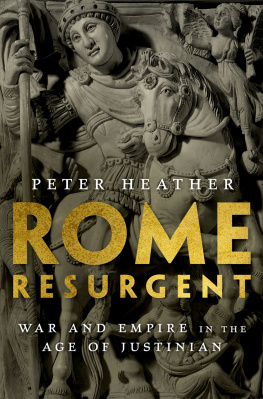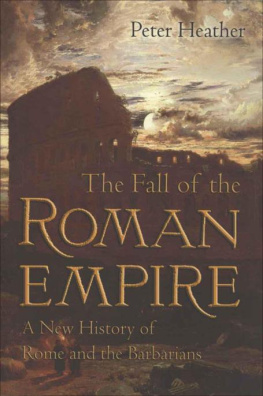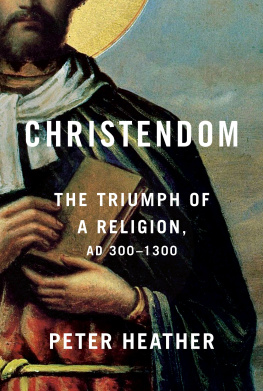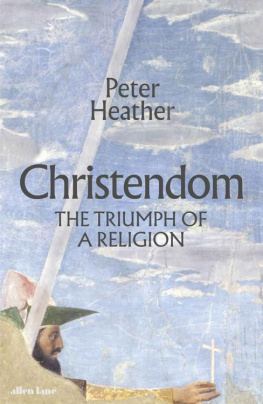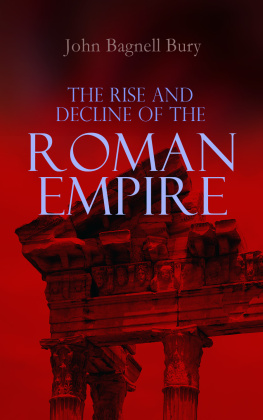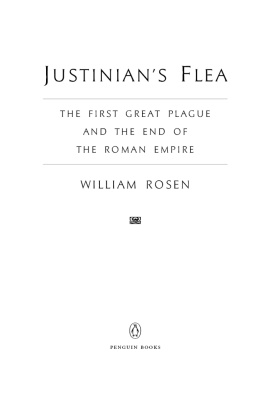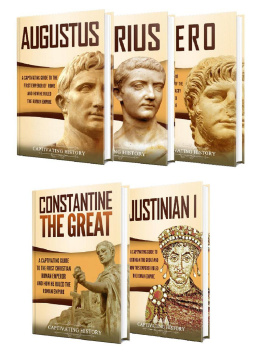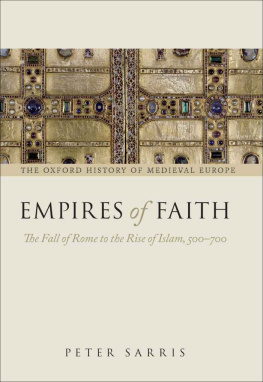
ROME RESURGENT
Ancient Warfare and Civilization
SERIES EDITORS:
RICHARD ALSTONROBIN WATERFIELD
In this series, leading historians offer compelling new narratives of the armed conflicts that shaped and reshaped the classical world, from the wars of Archaic Greece to the fall of the Roman Empire and the Arab conquests.
Dividing the Spoils:
The War for Alexander the Greats Empire
Robin Waterfield
By the Spear:
Philip II, Alexander the Great, and the Rise and Fall of the Macedonian Empire
Ian Worthington
Taken at the Flood:
The Roman Conquest of Greece
Robin Waterfield
In Gods Path:
The Arab Conquests and the Creation of an Islamic Empire
Robert G. Hoyland
Mastering the West:
Rome and Carthage at War
Dexter Hoyos
Romes Revolution:
Death of the Republic and Birth of the Empire
Richard Alston
The Plague of War:
Athens, Sparta, and the Struggle for Ancient Greece
Jennifer T. Roberts
Rome Resurgent:
War and Empire in the Age of Justinian
Peter Heather

Oxford University Press is a department of the University of Oxford. It furthers the Universitys objective of excellence in research, scholarship, and education by publishing worldwide. Oxford is a registered trade mark of Oxford University Press in the UK and certain other countries.
Published in the United States of America by Oxford University Press
198 Madison Avenue, New York, NY 10016, United States of America.
Oxford University Press 2018
All rights reserved. No part of this publication may be reproduced, stored in a retrieval system, or transmitted, in any form or by any means, without the prior permission in writing of Oxford University Press, or as expressly permitted by law, by license, or under terms agreed with the appropriate reproduction rights organization. Inquiries concerning reproduction outside the scope of the above should be sent to the Rights Department, Oxford University Press, at the address above.
You must not circulate this work in any other form and you must impose this same condition on any acquirer.
CIP data is on file at the Library of Congress
ISBN 9780199362745
eISBN 9780199362769

CONTENTS

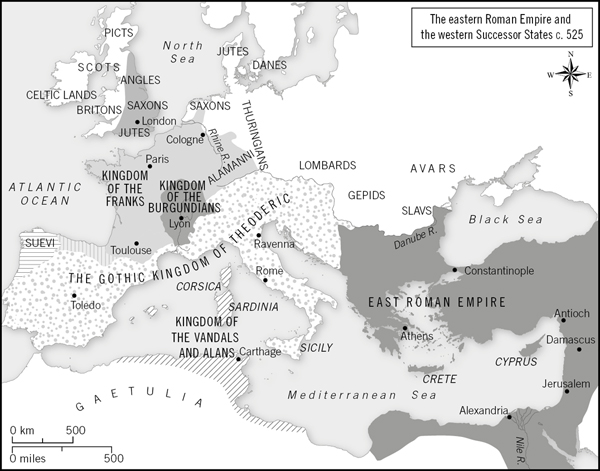
MAP 1
East Rome and the Western Successor States ad 525
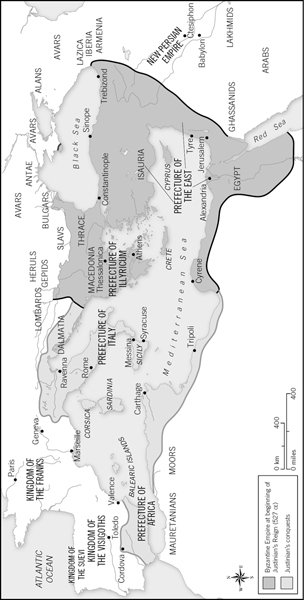
MAP 2
The Conquests of Justinian

MAP 3
Constantinople in the Age of Justinian
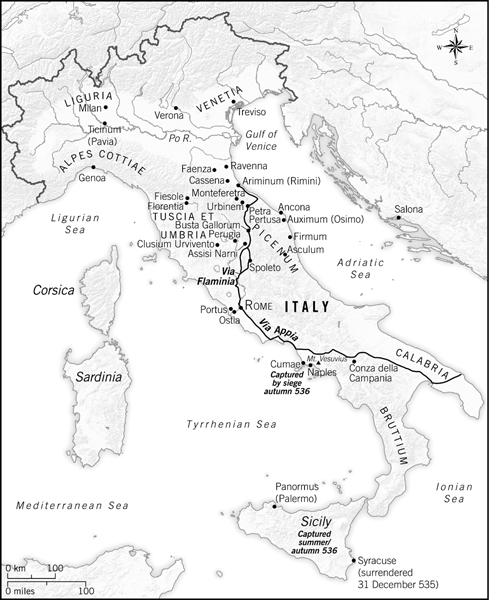
MAP 4
The Conquests of Italy
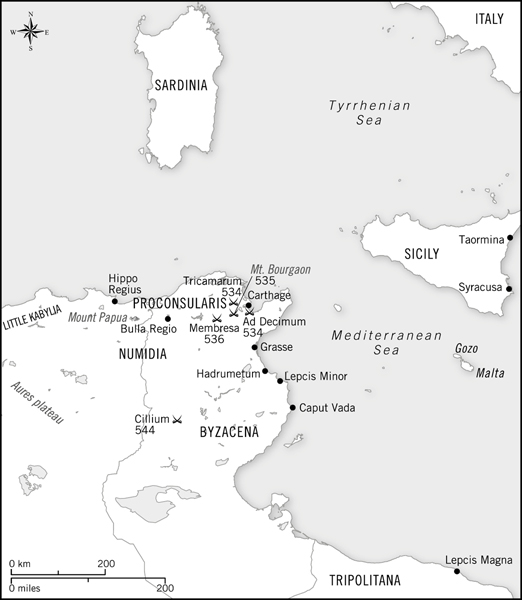
MAP 5
The Conquests and Subjugation of Africa
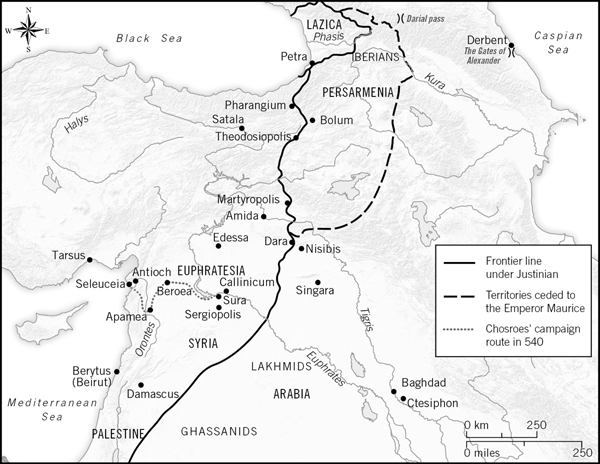
MAP 6
The Eastern Front: Justinian and Afterwards

FIGURE I.1
Justiniana Prima, the emperors birthplace went from village to regional imperial capital as Justinian sought to memorialize his birthplace.
As emperors go, Justinian is pretty well known, not least because he has left us a range of striking monuments. You dont have to enjoy poking around Balkan ruins (as I confess I do) to have your breath taken away by the great cathedral church of Hagia Sophia in modern Istanbul. And the beautiful mosaic panels depicting Justinian and his supporting courtiers on one side, with, opposite, his wife, the Empress Theodora, and hers annually draw thousands of visitors to Saint Vitale in Ravenna. There are also two excellent pen portraits in contemporary sources which agree on all the key points. As the Chronicler Malalas puts it,
He was short with a good chest, a good nose, fair-skinned, curly-haired, round-faced, handsome, with receding hair, a florid complexion, with his hair and beard greying.
But he is not as well known as he would be, I suspect, had he lived in the first century ad, and the extraordinary nature of his reign makes him well worth his place alongside the stars of I Claudius.
Justinian came to throne in 527, divinely appointed ruler of a self-styled Roman Empire which was still coming to terms with a previous century which had seen its western half evaporate into non-existence. After five hundred years of existence (a time span which puts nineteenth- and twentieth-century European empires firmly into perspective), the largest and longest-lived empire western Eurasia has ever known saw its western provinces fall under the control of a series of foreign military powers in the third quarter of the fifth century: Angles and Saxons in Britain, Franks and Burgundians in Gaul, Visigoths and Sueves in the Iberian peninsula, Vandals and Alans in the western half of North Africa (modern Libya, Tunisia, and Algeria). Italy, the ancient seat of empire, and home, of course, to the city of Rome itself, was ruled by a refugee prince of the Sciri called Odovacar, who had fled to Italy when his fathers kingdom had been destroyed in the 460s and then led a coup dtat which ousted the last Western emperor, Romulus Augustulus, in the summer of 476, after which he pointedly sent the Western imperial regalia off to Constantinople. The intervening half-century before Justinian came to the throne had seen some further changes, of which the most important were the extension of Merovingian Frankish power south and west from an original power base in modern Belgium and Theoderic the Ostrogoths conquest of Odovacars Italian kingdom between 489 and 493 (Map 1).
The causes of this astonishing imperial unravelling have been intensely debated since the time of Gibbon and before, but recent years have seen the emergence of a revisionist literature which has sought to minimize both the role of outsiders in the events of the fifth century and the amount of violence involved. In this view, various Roman interest groups decided to stop participating in the structures of empire and used semi-outsiders (such as the Franks and Ostrogoths), who were already part of a broader Roman world, to help them negotiate the path to local autonomy. A book about the Emperor Justinian is no place for a full discussion of this hotly debated issue. But in the chapters which follow, we will need to think a bit more about the Vandal-Alans and Ostrogoths in particular, who were targeted by Justinians armies, and although the revisionist discourse has gained considerable traction in some scholarly circles, in some important respects it does not add up to a fully satisfactory account of the overall process of Western imperial dismemberment.

